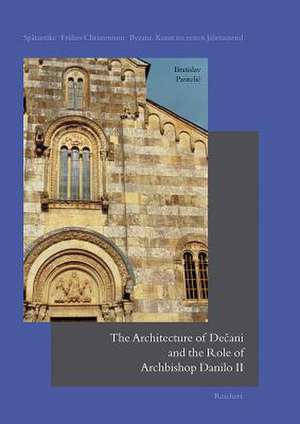The Architecture of Decani and the Role of Archbishop Danilo II: Spatantike, Fruhes Christentum, Byzanz, cartea 9
Autor Bratislav Pantelicen Limba Engleză Hardback
Preț: 512.30 lei
Preț vechi: 632.46 lei
-19% Nou
Puncte Express: 768
Preț estimativ în valută:
98.03€ • 102.15$ • 81.17£
98.03€ • 102.15$ • 81.17£
Carte indisponibilă temporar
Doresc să fiu notificat când acest titlu va fi disponibil:
Se trimite...
Preluare comenzi: 021 569.72.76
Specificații
ISBN-13: 9783895002397
ISBN-10: 3895002399
Pagini: 196
Editura: Dr. Ludwig Reichert
Seria Spatantike, Fruhes Christentum, Byzanz
ISBN-10: 3895002399
Pagini: 196
Editura: Dr. Ludwig Reichert
Seria Spatantike, Fruhes Christentum, Byzanz



